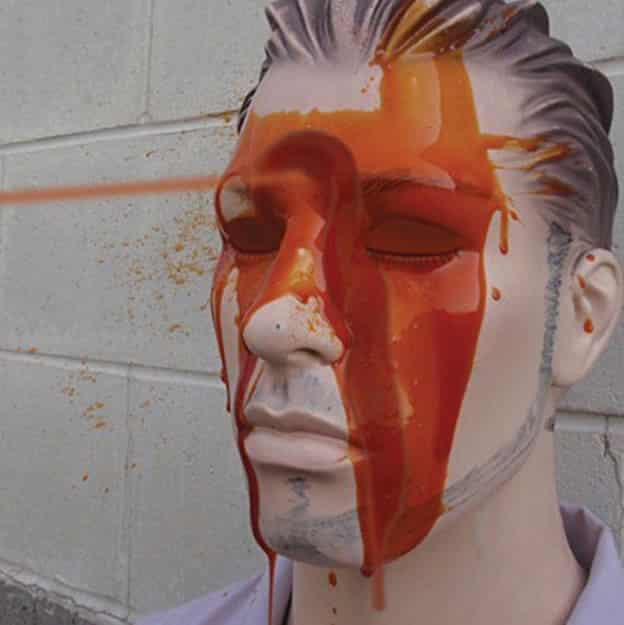
Pepper spray is one of the most effective non-lethal self-defense tools out there. It’s potent enough to stop an attacker in their tracks without causing permanent harm.
That’s why learning how to make your own pepper spray is not just a handy skill—it’s smart.
Plus, it’s a lot cheaper than buying it off the shelf, and you can customize the intensity to your personal preferences.
First, A Couple of Notes Of Caution
Homemade Pepper Spray Won’t Be As Effective
Before we make pepper spray, I want to temper your expectations. Homemade pepper spray works, but it won’t be as effective as the stuff you can buy. Why? For two reasons:
1. Commercial Brands Will Be Stronger and Spray Further
First, the top-of-the-line pepper sprays are manufactured with specialty machines in controlled settings. This means the manufacturers can fine-tune the recipes and achieve maximum effectiveness.
Second, the spray bottles and trigger mechanisms are better designed than you can develop at home. They can package the pepper spray into bottles under intense pressure.
This allows for longer-range spray patterns, which equals better self-defense. Here’s an example:
1. FOX Labs Pepper Spray
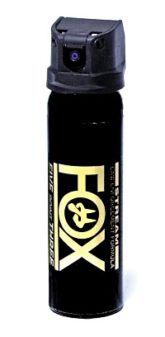
It’s said to be the hottest chili pepper known to man – at around 2,000,000 Scoville Heat Units! This pepper causes intense dry heaves, blinding headaches, and some near-stroke symptoms. But what if the “pepper” in a pepper spray was that powerful?
FOX Labs is measured at 5,300,000 SHU – an astounding 265% hotter than the Carolina Reaper!
It can spray this blinding defense up to 17 to 20 feet. FOX Labs Pepper Spray is used by Police, Law Enforcement, Security, and Military agencies worldwide.
2. There Are Risks Involved In DIY Pepper Spray
Anytime you DIY, there are risks. The most obvious one here is an accidental discharge. This stuff is meant to burn so that it won’t feel good.
You also need to make it in a well-ventilated area. If you (or anyone helping) have difficulty breathing, buy some pepper spray instead.
Breathing intense chili pepper heat can cause problems with respiration.
↓ 5 Most Powerful Pepper Spray / Best For Self-Defense
Prepper Spray Ingredient List
Pepper spray comprises 2 main ingredients: Capsaicin and a liquid. Capsaicin is an oil extracted from chili peppers. It’s the active ingredient in pepper spray. It’s the heat. But to “spray” this heat, it must be mixed with a liquid.
Now you have basically three liquid options to choose from: Water, Alcohol, or Vinegar. Water is cheaper and more readily available. However, alcohol and vinegar help to stabilize the capsaicin oil and increase the shelf life of the mixture.
Selecting Your Peppers
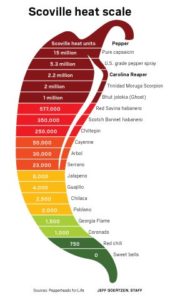
So you want to source extremely hot peppers but ones that won’t break the bank to acquire.
One of the lowest Scoville unit pepper is the bell pepper. Yes, it’s technically a “pepper,” but it won’t be effective for self-defense purposes – move on.
You must move up to at least the Cayenne Pepper to get into enough heat for self-defense. While this pepper will burn and irritate an assailant’s eyes, it’s not likely to stop them in their tracks.
The next level up would be the Red Savina Habanero; the heating unit has increased significantly and will give you some decent time to escape an attack.
At the top of the Scoville scale is the Carolina Reaper. These will stop a would-be attacker or looter in their tracks. The burn factor will last a considerable amount of hours.
This will give you plenty of time to subdue your attacker.
↓ Peppers comparison! List of Hottest Chili Peppers On Earth
It’s not always feasible to get all of these types of peppers. But the main objective isn’t to maim; it’s to stun your attacker long enough to get to safety or deter them from proceeding further.
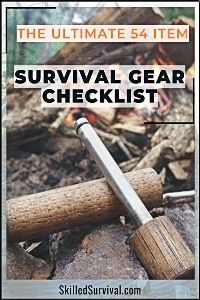
Want a free 54 item survival gear checklist?
Enter your email below to instantly download this Complete Checklist PDF. No purchase necessary. 👇 👇How To Make Pepper Spray At Home
Safety First
You must wear rubber gloves and safety goggles when making your pepper spray. This is to protect your hands and eyes from the oil. I can not stress this enough—unless you are immune to capsaicin, you do not want this oil near your skin or eyes.
Also, wear a mask to prevent inhalation of the vapors, especially if you are sensitive to strong odors or allergic to peppers. You must find a refillable spray bottle and check it for leaks. Do not let the spray bottle drip all over your bug-out pack, purse, or car.
You will also need at least six chilis; the hotter, the better. You need one bulb, two tablespoons of minced garlic, or two tablespoons of powdered garlic anwill also need a stove or food dehydrator to dry the chilies.
If you are on the run, a solar oven will also work. The best-case scenario has a stockpile already started of dried chili peppers.
The first step is to dry your peppers in a food dehydrator, a low-temperature oven, or a solar oven. Once the peppers have been dried, add them to a blender or chop them as finely as possible, then place them in a bowl.
Mix & Blend
First, you’ll want to add garlic to the mix, followed by two tablespoons of baby oil—this helps the spray stick to your attacker’s clothes. Finally, add twelve ounces of vodka or vinegar to boost the shelf life of your homemade pepper spray.
If you’re using a blender, blend it on high for about two minutes. If you’re doing it the old-fashioned way, mash it by hand until it turns into a smooth paste. Pro tip: Be careful not to spill this potent concoction—this stuff is not something you want to accidentally rub on your hands.
Next, pour the mixture into a large bottle using a funnel, and let it sit overnight in a cool place. The mixture needs to reduce for maximum potency.
The Next Morning:
You’ll need a funnel, cheesecloth, and a water bottle.
Place the funnel in the 20-ounce container you plan to store it in, then cover the funnel with the cheesecloth. Now, pour your pepper mixture into the bottle, carefully—this is a messy step if you’re not focused. Finally, add another 12 ounces of alcohol or vinegar.
And voilà—you’ve got yourself a batch of homemade pepper spray.
Now, store it in the fridge or another cool place. When the need arises, your homemade pepper spray will be ready to go—just grab, shake, and spray.
Since you’ve used vinegar or alcohol, your mixture should last anywhere from one to three months.
↓ How to Make Pepper Spray
It’s Time To Clean Up
Now that you have made your pepper spray, it’s time to clean up any containers, the blender, or the grinder. Capsaicin is an oil; plain old soap and water aren’t going to get rid of the residue. You will need a solution of bleach and water.
This will help counteract the oils left behind in all the containers. To clean your blender or grinder, you will need a solution of mineral oil, dish soap, and hot water. Let the solution soak for about thirty minutes to ensure all traces have been lifted from the plastic.
We all know plastic holds not only odors but can also trap oils.
A word of caution: When you make your pepper spray, wear protective goggles and gloves in case of any splashing. Just remember you can make pepper spray with powdered or ground peppers.
Not just by using homegrown or store-bought dried peppers. Equally important is the intent to get the maximum use of the peppers and garlic combined to stop an assailant. So get yourself a bottle of FOX Labs Pepper Spray.
You’ll be hard-pressed to find a more high-powered pepper spray at this price.

Prepare, Adapt & Overcome,
P.s. - I just found out 2 out of 3 Americans don’t feel prepared for a 3 day disaster!!!
I guess this goes to show how modern society continues to embrace ‘living a fragile life.’ What’s crazy is… it’s so easy to fix.
To make sure YOU have the basics, watch our FREE training on “10 Simple Steps To Basic Preparedness” that shows you HOW.
Nothing crazy here… this isn’t doomsday prepping... just the basics every responsible adult should have before a disaster strikes.Why You Can Trust Skilled Survival...
Go here now to review a full breakdown of:
- Who We Are
- Our Credentials
- Our Mission
- & Product Recommendations...
Here are a few highlights of our teams credentials & certifications:
- Certified Member of a Mountain Search & Rescue Organization
- Plant Emergency & Safety Leader for a Major Food Manufacturer
- Member of the 10TH Mountain Division Hut Association
- Certifications: Avalanche 1, WFR, CPR
- Official Gear Tester for Numerous Outdoor Gear Companies
- Countless Multiday Backpacking trips into Remote Wilderness
- Bachelor's Degree In Mechanical Engineering
- Bachelor's Degree In Civil Engineering
- Bachelor's Degree In Biomedical Engineering
"It takes 20 years to build a reputation and five minutes to ruin it." - Warren Buffett
We're fully aware that trust is NOT something you GET but is EARNED.
And we'll continue to earn YOUR trust through our forthright and honest approach with each new Blog Post, Guide & Product we create...
P.s - I just took this FREE 60-second 'Readiness Score Quiz'👇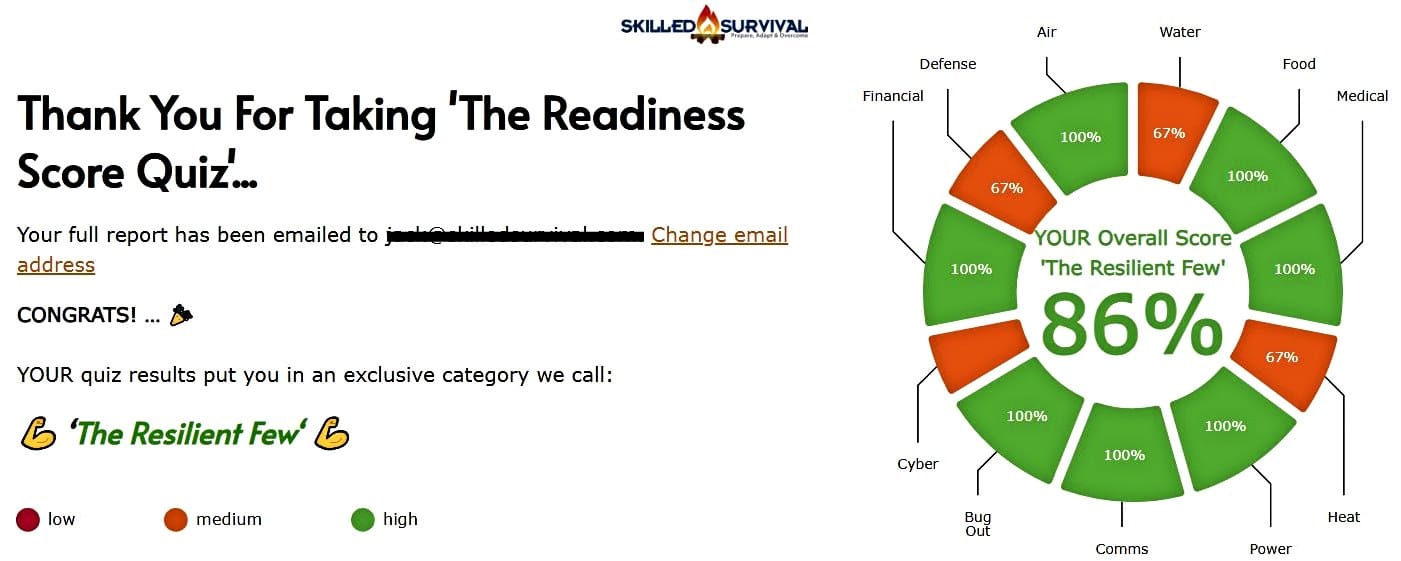
AND... I've still got a few gaps in my preps...🤔 But at least, I'm not part of 'The Fragile Masses'. 👍 Find out where YOU stand by answering a few questions...

Recommended Reading
Home Fortification Tactics To Punish Stupid Invaders
These home fortification tips will make criminals think twice about targeting YOUR home. I share the best home defense tactics on a budget.
Tactical Pen: 7 Best Hidden Weapons For Self Defense
The best tactical pen is innovative, strong, sleek and 100% worth carrying daily! In this guide, we review the best ones on the market.
13 Homemade Survival Weapons You Can Build In A Day
When all else fails, make your own homemade survival weapons. These 13 are the best and easiest DIY weapons to make in a pinch.
Monkey Fist: How To Make One Useful For Survival
Learn how to make a monkey fist knot for survival. It's a versatile survival knot that could save your life someday.
Non-Lethal Weapons: The Best Ones To Protect Yourself
The best non lethal weapons are innovative, versatile, effective and 100% worth carrying! In this guide, we review the best on the market.
Self Defense Weapons: Best Ones For Insanely Strong Protection
Check out the latest self-defense weapons to protect yourself. Because there are more defend weapon choices than you realize.


